MAGGIE’S WORLD
Maggie’s World 009: Research, Obsession, and Obsessive Research
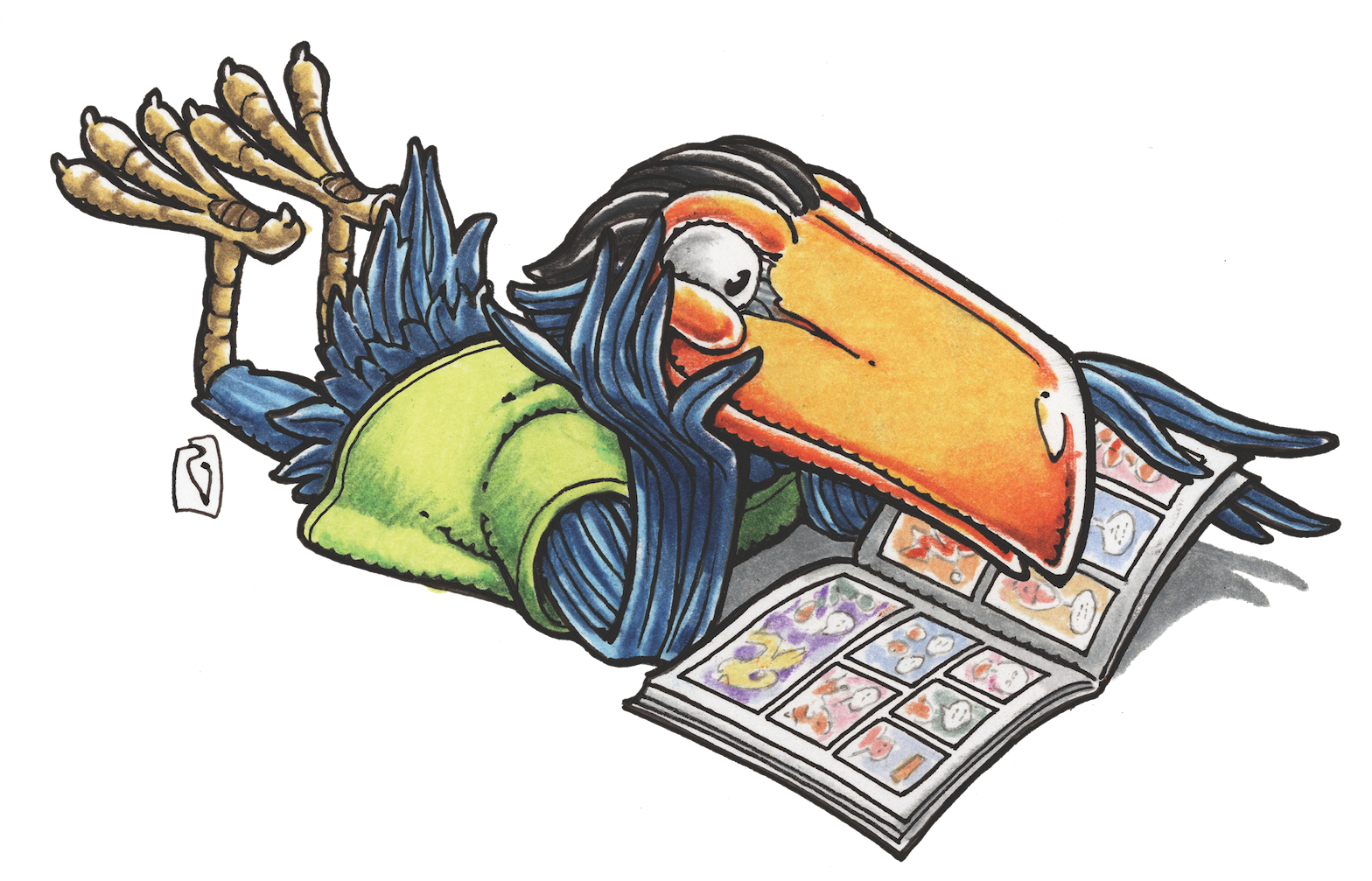
Hey, good question! Let me check it out!
This is how it begins for me. Thanks to the Internet and stacks (and stacks) of reference books, a casual request by a buddy (or a suggested panel topic) seems simple enough. A fast 15 minutes will provide enough information to let me pontificate for as long as my audience’s patience will hold out.
But.
It turns out that those 15 minutes aren’t enough. And I am reminded again to pay tribute to the countless hordes whose obsessive research has made me take their information for granted—and whose obsession is sometimes stereotyped as a symptom of mental aberration. Because, without those hordes, we’d still be referring to the anonymous Carl Barks only as “The Good Duck Artist” and wondering why we can’t find a copy of Harvey’s Steve Canyon Comics #7 (Feb. 1949) and Air Fighters Comics Vol. 3 #3 (Spring 1946). [Note: Neither exists.]
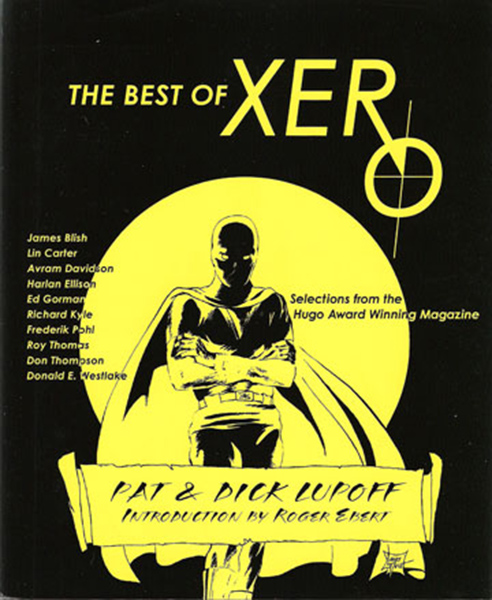
This came to mind when Danny Fingeroth recently invited me to be on two panels. The first was devoted to Roger Ebert’s activities as a science fiction and comics fan (where he letter-hacked and wrote poems as “Rog Ebert”). I turned to my copy of Pat and Dick Lupoff’s The Best of Xero (Tachyon Publications, 2004) for which he provided a foreword—but I have not yet located my copy of Buck and Juanita’s fanzine Yandro for which Rog wrote me a love poem. (No, I never did meet him; no, I had had no idea until I read it that he had done so; it was a joke.) And that issue of Yandro is definitely not on line.
Danny’s second panel involved the effects of the Kennedy assassination on comics. Now, this one I was sure I could quickly track down. With the great gobs of information amassed by such researchers as Hames Ware, Paul Leiffer, and Allan Holtz for online consumption, I knew I could quickly locate all the details of syndication for the syndicated newspaper cartoon panel I was trying to locate. But nuh-uh.
It was old-fashioned “plow through bound volumes” labor (on the part, be it noted, of Columbia University scholar and library guru Karen Green; librarians rock!) that pulled out the information on the cartoon I remembered only vaguely. The panel is so obscure that Google resisted my online efforts. And I share the information with you here because … Well, because now you’ll know, too. And now the information will be online. And sharing knowledge is what researchers do, right? So:
The Kennedy assassination was directly responsible for the canceling of a just-begun newspaper-cartoon feature. It happened this way: Comedy writer Gerald Gardner (1929- ) wrote for such TV shows as The Monkees and Get Smart but was also senior writer for the political-satire series That Was the Week That Was. His books included the bestselling photo-captioned Who’s in Charge Here? in which he wrote new dialogue for news photos. Cartoonist Frank Johnson (1931- ) drew such comic strips in the course of his long career as his own Beany—as well as Boner’s Ark and Bringing up Father.
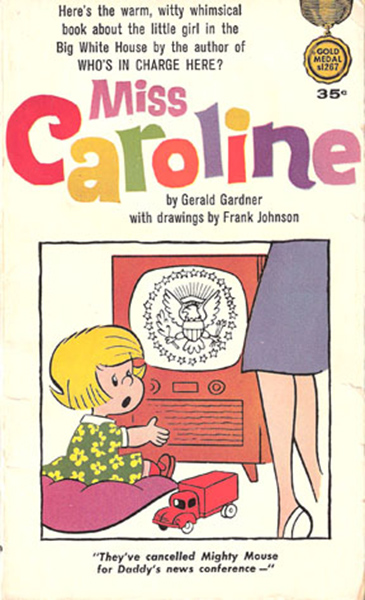
Gardner and Johnson
Gardner and Johnson teamed up to produce a Gold Medal paperback for a January 1963 release: Miss Caroline. According to an article in the July 6, 1963 Editor & Publisher (unearthed for me by the aforementioned Karen Green), the paperback was a hit, selling 250,000 copies. Its focus, as you can guess from the sample on its cover, was the antics of a little girl named Caroline who happened to be living in the White House at the time. Sample captions: “Mr. Rockefeller, are you richer than my Daddy?” and “When Daddy put Uncle Bob in the Cabinet, how did he breathe?”
The story in Editor & Publisher featured the announcement that newspaper syndicate Adcox Associates of San Francisco was about to release a panel, Miss Caroline: The Little Girl in the Big White House. The format would be two columns wide, the panel to run six days a week, “beginning in the Fall, probably October.” Adcox president Glenn Adcox was quoted as saying, “One of the first newspapers I signed up for the panel was the Boston Globe in the Kennedy hometown.”
And it did run—but not long enough to enter most reference works. Because, whenever it actually made its debut that autumn, the last day it ran in newspapers was November 22, 1963.
That information took me a week or so to track down, and I was only able to do so with a humanitarian willing and able to plow through bound copies of Editor & Publisher from 1963.
But what about locating and correcting online misinformation?
I’m not talking about the sort of rumor verification provided by Snopes; I’m talking about the well-meaning tidbits that are Just A Bit Off. Frankly, the one I’m about to address is something I, too, had internalized as fact. The correction came about thanks to one of my favorite volunteer projects: the annual Appleton (Wisconsin) American Association of University Women book sale. [Digression: You might do well to see whether the AAUW holds a book sale near where you live; you never know what you’ll find.] We annually categorize the hundreds and hundreds of books donated; the result is a highly organized event in which collectors of Harlequin romances don’t have to stumble over Clive Cussler fanatics to fill holes in their collections. All the books are pre-sorted by genre.
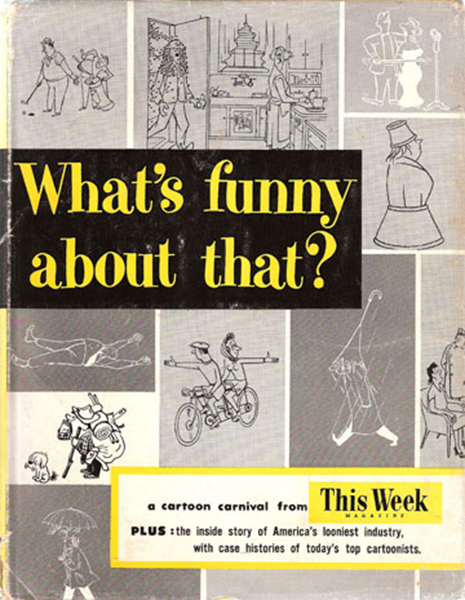
“Compiled by the editors of This Week Magazine”
(E.P. Dutton, 1954)
So. Sorting, sorting, sorting—and I always keep an eye out for unusual donations. Obviously, part of the fun for book collectors is that there are treasures in the mix—and it’s part of the fun for me, too. (At the moment, for example, I’m researching a donated book that may be valuable enough that it will be put up for auction; it could provide additional funding for a scholarship or the like.) At any rate, I stumbled over the cartoon collection What’s Funny About That? “Compiled by the editors of This Week Magazine” (E.P. Dutton, 1954). The book didn’t have a dust jacket, and most of its cartoons weren’t on a New Yorker level—but a bonus was a brief biographical section on a few of the cartoonists and hey! Here’s a two-pager written by Charles D. Rice and illustrated by Jeff Keate. And it’s titled “Squeans, Plewds and Briffits … Or, How to be a Cartoonist.” In 1954. 1954?
Because I first came across these terms in Mort Walker’s Backstage at the Strips (Mason/Charter, 1975). On pages 26-30, he outlined (and illustrated) what I took to be a gag lexicon he had created. (Squeans indicate a character is drunk; plewds are sweat drops radiating from a character; briffits are dust clouds left behind when a character is running.) So what was with this comedic essay two decades earlier? I researched online and did find a brief mention of the Rice essay from someone who hadn’t read it but who had noted that Walker had cited Rice. Sure enough, when I reopened Backstage, what should I find on page 30 but Mort’s own clear credit: “Charlie Rice, of This Week magazine, is one of the few serious students of comicana around. One of his first contributions was to catalog briffits. Encouraged by the enthusiastic reception, he then tackled squeans, which he categorized as ‘a loose-jointed asterisk.’ ” And so on.
What many of us had assumed was Mort’s joke about an imaginary scholarly attribution turned out to be true. But I would never have found it out for myself, had it not been for a casual observation in the midst of tossing dozens of volumes in appropriate boxes.
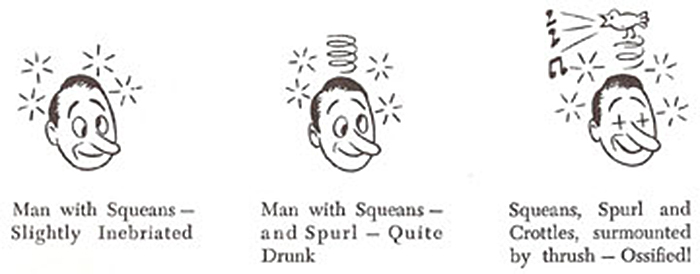
On the other hand.
While I was in the middle of writing this essay, a friend posted a query on my Facebook page. Could I help him identify a particular fantasy story he recalled reading when he was a child? I made a bunch of guesses and posted the question for myself on Facebook. Within less than half an hour, Mr. Silver Age (aka Craig Shutt) had nailed it, complete with a link to more information.
Because, let’s face it: We may be serious researchers. We may be suffering from some sort of obsessive-compulsive disorder. Or we may simply be fascinated by what others perceive as trivia. Whatever the cause, the result is contributions to the comics field, because we pursue our questions until we have answers. And then we share the information with our buddies.
Mission accomplished. Return to base.
Maggie’s World by Maggie Thompson appears the first Tuesday of every month here on Toucan!